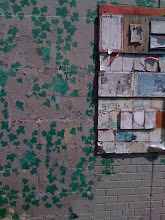
Many of us take Camus and Copernicus more seriously than couture. While there’s nothing wrong with this, we shouldn’t simply dismiss fashion as a frivolity. Fashion isn’t irrelevant, even if you’d prefer to curl up with Oscar Wilde rather than Oscar de la Renta. Fashion magazines don’t just sell purses and Prada shoes; they sell ideologies that affect both the fashion-fluent and the fashion-phobic.
Though primarily beacons of sartorial perfection, these magazines are also fascinating cultural indices. Recent issues of Vogue have – sometimes intelligently, and sometimes with laughable naiveté and political-incorrectness – explored the size and shape of racism and sexism in the fashion industry and beyond.
American Vogue’s annual “Shape” issue (May 2008) is always a half-hearted attempt to put some meat on the fashion industry’s bones. Vogue advertises fashion and fantasy, so when it attempts to infiltrate (normal-sized) reality, it’s a little hard to swallow. The magazine’s somewhat-condescending attempt to empathize with the non-skeletal leaves a bad taste in my mouth. The perfunctory acknowledgement that model bodies are an anomaly never feels genuine coming from the lips – or computer – of Editrix-in-Chief Anna Wintour, who has based her career on waif-worship. Straddling the line between reality and Photoshopped fiction, Vogue seems to want to buy the stilettos and wear them, too.
In her editor’s letter, Wintour wrote about approaching Kate and Laura Mulleavy, the dynamic sister design duo behind the brilliant and whimsical label Rodarte, with a “dream proposition”: a free, four-month diet and exercise plan. The Mulleavys, who probably wore a size 12 before Anna’s intervention, shrugged off the magazine’s claim that this plan would give them “peace of mind and the energy to prosper,” suggesting instead that Wintour simply found their size incongruous with their fashion stature. Even when Vogue shines the spotlight on normal-sized women, the subtext reads loud and clear: “We only accept non-model bodies when they’re on their way to being thin!”
This year’s issue bit off way more than it could chew when editors chose the cover shot featuring athlete LeBron James and model Giselle Bündchen. These two seem like inappropriate cover choices for an issue that purports to celebrate non-homogenized shapes: they each embody limited gendered ideals of beauty – James as the masculine muscleman, and Bündchen as the fragile female.
The disturbing photo also arouses poignant connotations of ugly racism. The composition references the iconography of vintage film posters for the movie King Kong, depicting a primal, savage brute capturing a beautiful woman. James is screaming or growling, his face contorted into a menacing scowl, while lithe Bündchen, beaming in an effervescent green evening gown, slips out of his grasp. Photographer Annie Liebovitz portrayed James as big, violent, and scary, a trope of black masculinity that should have gone out of style decades ago.
Had the magazine acknowledged and problematized these themes, the cover choice could have been a clever way of inviting readers to re-examine historical and contemporary racial stereotypes. Since the writers failed to critically engage these topics, the Shape issue was less a celebration of diverse bodies than a sad statement on the size and shape of intolerance in the fashion industry.
The June 2008 issue of American Vogue featured another shocking shoot, entitled “From Here to
The fashion news isn’t all fatalistic. In July, as tech-heads waited in line for the new iPhone, fashionistas braved the well-heeled crowd to snag a copy of Italian Vogue’s all-black issue, a response to the whitewashed catwalks. Every editorial in the coveted issue featured a cast of black beauties including icons Naomi, Tyra, Liya, Alek, and Iman, and gorgeous newcomers Jourdan Dunn, Arlenis Sosa, and Chanel Iman. Charismatic Chanel is finally mainstream and down-market as one of the fresh faces of the Gap’s fall line.
The fashion spreads, shot by renowned photographers including Steven Meisel, mostly managed to avoid reductive tropes of “blackness,” and at times even investigated the meaning of “ethnic” beauty, such as the thoughtful and challenging shoot that subverted the notion of “blackface.” The magazine also embraced bigger beauty, including a gorgeous spread featuring full-figured model Toccara Jones, of America’s Next Top Model fame. Though the features were fabulous, the ads separating them – for brands like Dior, Prada, and Dolce & Gabbana – included only white models, which only emphasized the extent to which black models are still a rarity in the fashion world.
Fall means it’s time for cardigans, boots, and Mercedes-Benz Fashion Week. I’m looking forward to seeing some of my favorite designers – especially Philip Lim – flex their creative muscles when

No comments:
Post a Comment